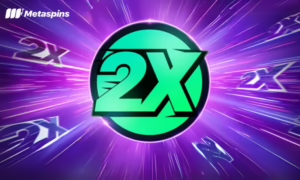‘Staking’ is a type of crpytocurrency reward that is given to certain cryptocurrency holders on particular blockchains.
On a blockchain, ‘staking’ refers to users having a stake (aka certain rights) on a blockchain that is proportional to the amount of cryptocurrency that they own on that particular network. What those rights are depends on the network. With PoS, the degree of ownership indicates the percentage of rights that a node has to mine blocks on a particular blockchain, in relation to other cryptocurrency holders.
When blockchains mine by using a staking mechanism, they do so by means of a Proof of Stake (PoS) consensus protocol. It allows the crypto holder to use the cryptocurrency to earn a passive income by allocating their cryptocurrency to process transactions. That cryptocurrency cannot be used for anything else while it is allocated for this purpose, and the owner will earn a cryptocurrency reward for every transaction that is completed by them. The cryptocurrency used for PoS can be either a token or a cryptocurrency, and the reward is cryptocurrency.
An example of this is Ethereum blockchain. Their PoS consensus protocol requires the staker, also known as a ‘validator’, to submit 32 Ether (ETH) in order for their computer to register as a validator node. However, as most hodlers do not possess that amount of cryptocurrency, they often form a staking pool, whereby a group of cryptocurrency hodlers will consolidate their ETH together to meet the minimum requirement. Those nodes will then split the rewards according to the percentage of ETH that each node contributed.
The purpose in this form of validation is to ease the strain on the network that a Proof of Work (PoW) protocol causes, and to decrease the amount of computing power required to validate transaction. Since each transaction is validated only by a small number of nodes, the processes is much faster. However, it is not enough to simply be a part of the network and own Ether. The node will also need to download special staking software as well. However, although fewer nodes are required, any changes will still require a stake of 51% of ETH on the Ethereum network in order to implement them, which is almost impossible.







